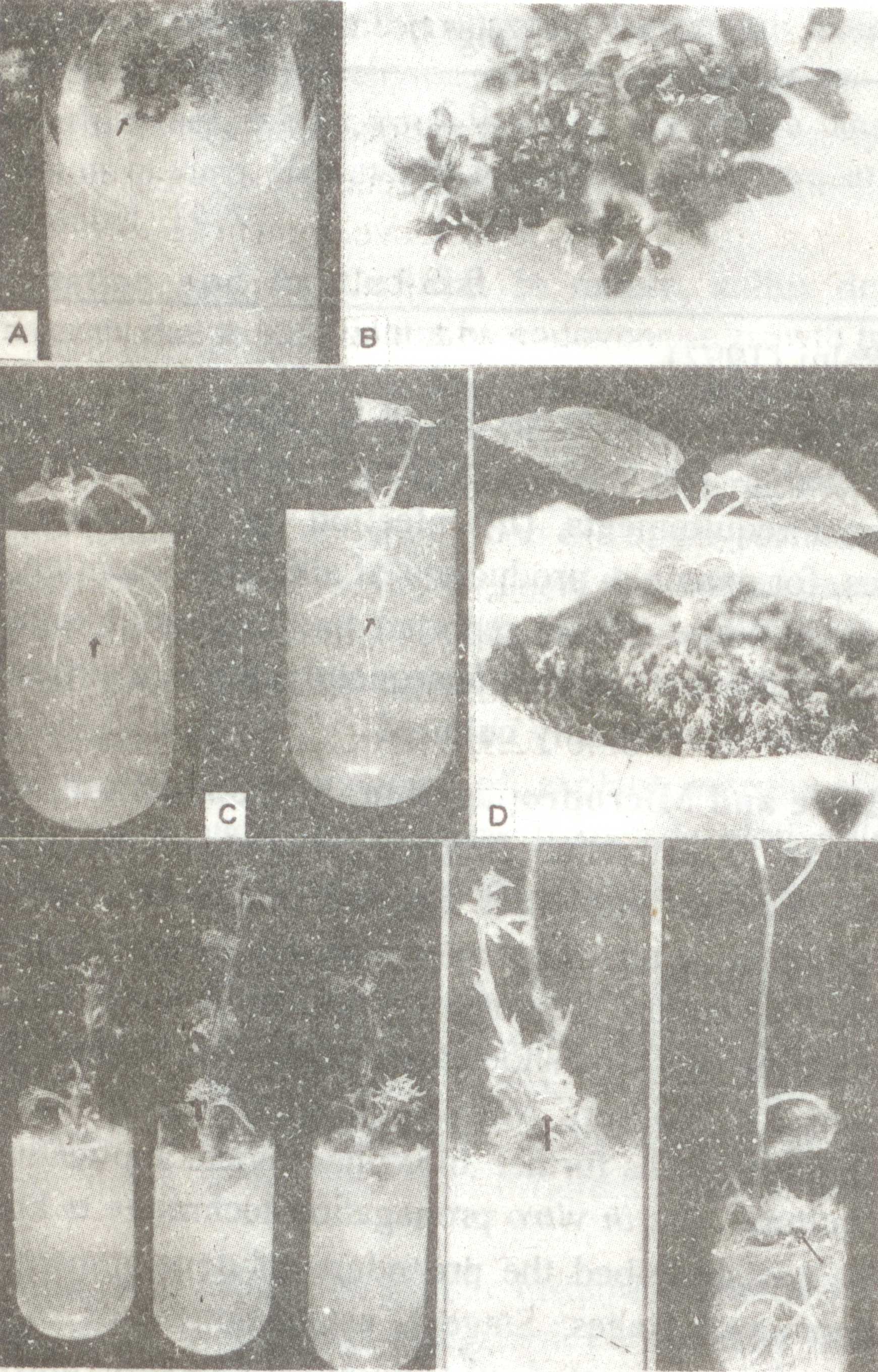Shoot Culture and Micropropagation
Stage I : Selection of a suitable explant and inoculation into nutrient medium;
Stage II : Multiplication and growth of culture which takes about 2 months, followed by repeated subculture. At this stage rootless (with apical dominance, AD) cultures are obtained. In contrast, in fast multiplying cultures rootless multishooted (MS) cultures are also developed;
Stage III: At this stage cultures are obtained by changing the medium to planting out in the following 3 substages:
- Microcutting Stage (MC): In this case, culture is transferred to multishoot inducing medium as to get longer shoot and to harvest by MC. Finally MC is subcultured on medium for rooting. Stage II AD cultures also respond to MC procedure;
- Stage-III MS Culture Stage: At this stage, stage II MS cultures are divided into individual shoots which are induced to form apical dominant shoots with roots;
- MS Culture Stage: Small clumps of culture from stage II MS culture are transferred to AD inducing medium to get a bushy plant. Generally this type of plant is preferred for many ornamental horticulture plants;

Fig. 8.3. Morphogenetic responses of shoot and root explants of tropical trees. Syzygium cutnuni (A-B); A -shoot formation from the nodal segment excised from seedlings after 2 weeks of culture; B-multiple shoot formation after 4 weeks of culture. Morus nigra (C-G); C -rooting of shoots on MS + NAA (1.0 mg/1) medium after 3 weeks of subculture; D-establishment of plantlets into soil after one month of transfer; E-female inflorescence formation after 2, 3 and 4 weeks (on MS + BAP (1.0 mg/1) medium from mature nodal segments; F-female inflorescence formation on MS + BAP (1.0 mg/1) + IBA (0.5 mg/1) after 4 weeks; G-complete plantlet with ripen fruits after 8 weeks of subculture (on MS + BAP + IBA medium.
Stage IV: This is the planting out stage where plantlets are aseptically removed from test tube environment to natural and harsh environment. At this stage roots should be fully functional in potting mix (the soil environmental where plantlets are transplanted). During this procedure generally plantlets fail to survive because of desiccation (from 100% humidity of test tubes to low humidity under ambient conditions), harsh environment, invasion of soil microorganisms, unadjustibility from dependent (artificial medium) to independent nutrition (by photosynthesis).
These procedures generate the concept that a single medium is not sufficient for multiplication and regeneration of plants. Establishment of explant is influenced by the tissue of explants, constituents of nutrients and environmental factors. The region of young plant having cells (shoot tip, auxiliary buds) is the suitable explant.
Mature tissue impregnated with high amount of phenolic compounds is difficult to culture. Therefore, oxidation of these phenolics is necessary before culturing them. Hu and Wang (1983) have suggested for (i) adding antioxidants to the medium, (ii) pre-soaking of explants in antioxidant solutions before culture, (iii) sub-culturing to a fresh medium, and (iv) providing light or no light during the start of culture.
In addition to nutritional composition, light and temperature are equally important in propagation. For morphogenesis and biosynthesis of chlorophylls, fluroscent light is necessary. For stage I and II light intensity of 1,000 lux has been found best, and for stage III it was recorded between 3,000-10,000 lux (Murashige, 1974).
Yadav at al. (1990 a,b) successfully cultured shoot tips and nodal explants of two tropical trees (e.g. Morus nigra and Syzygium cuminii) in vitro. From these explants multiple shoots and roots were proliferated by providing different nutrient conditions. Finally the regenerated plants were transferred into the soil. In a separate experiment, inflorescence (in S. cumminii) and fruits (in M.nigra) were also developed successfully in vitro (Fig. 8.3) (Yadav, 1990).




